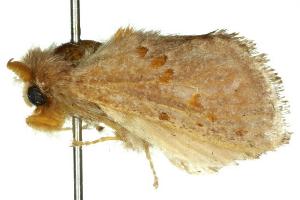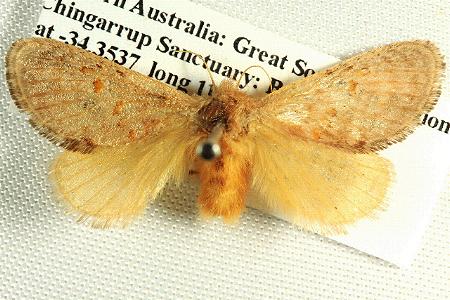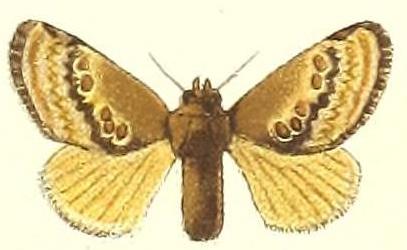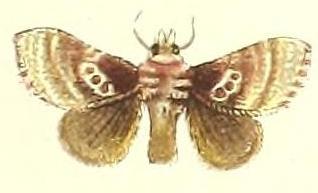
| LIMACODIDAE, ZYGAENOIDEA | (donherbisonevans@yahoo.com) and Stella Crossley |

(Photo: courtesy of CSIRO/BIO Photography Group,
Centre for Biodiversity Genomics,
University of Guelph)

| LIMACODIDAE, ZYGAENOIDEA | (donherbisonevans@yahoo.com) and Stella Crossley |

(Photo: courtesy of CSIRO/BIO Photography Group,
Centre for Biodiversity Genomics,
University of Guelph)
The adult moths of this species have pale brown forewings, each with a line halfway across each forewing of three or four rusty orange spots. The hindwings are plain brown. The wings very easily lose their scales.

The forewings of the females have rounded wingtips. The females have a wingspan of about 3 cms.

The forewings of the males have pointed wingtips. The males have a wingspan of about 2 cms.

The species has been reported to occur in
However: it is thought that the Pseudanapaea specimens listed as Pseudanapaea dentifascia that were found in eastern Australia south of the Queensland border may be misidentifications of Pseudanapaea transvestita, and the ones north of the Queensland border are possible misidentifications of Pseudanapaea denotata, but it is also possible that all these names have been mis-applied to other so-far unnamed species in the genus Pseudanapaea.
Further reading :
Erich Martin Hering,
Bombyces and Sphinges of the Indo-Australian Region,
in Adalbert Seitz (ed.): The Macrolepidoptera of the World,
Volume 10 (1933), p. 681, and also
Plate 86, Fig. g2 & g3.
 caterpillar |  butterflies |  Lepidoptera |  moths |  caterpillar |
(updated 10 April 2011, 19 February 2018, 14 August 2019, 26 January 2020)